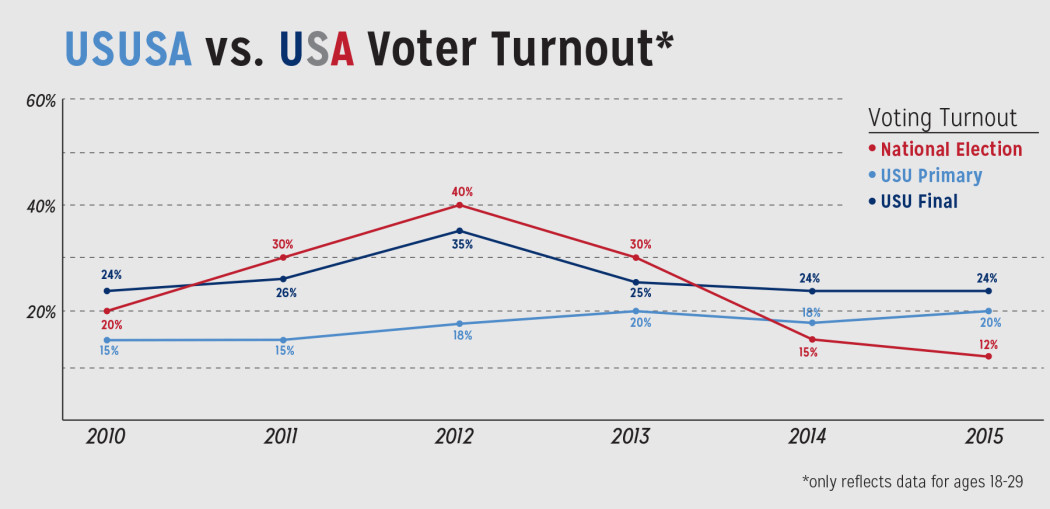The campaigns of the USUSA vs. the USA
It’s only two months into the year, and the Utah State University campus is buzzing with round-the-clock campaigning for the Utah State University Student Association election candidates.
Most candidates have been campaigning to get a successful voter turnout at the primary elections, which will be held from Monday at 7 a.m. to Tuesday at 3 p.m., and the final elections, which will be held on Wednesday at 7 a.m. to Thursday at 3 p.m.
For the 40 candidates, the campaigning process leading up to the primary and final elections is an intense, competitive and draining experience, said student body president Trevor Sean Olsen.
“I learned and grew so much during the very difficult weeks leading up to elections week and the very, very difficult week of elections and campaigning,” Olsen said of his campaign last year.
“The secret to campaigning is to make sure you have a great team behind you. No one person alone can run a successful campaign entirely by themselves,” said Matthew Clewett, a candidate for student advocate vice president.
From social media posts to creating platforms to thinking of a witty motto that will catch students’ attention, when it comes to campaigning techniques the 2016 USUSA candidates are not that different from the 2016 presidential candidates currently running for office — The Oval Office, that is.
Many candidates start as early as the end of the latest election, preparing themselves almost two years in advance.
Aside from the fact that one election involves voting for the leader of a country and the other involves voting for that of a university student body, each election revolves around and is dependent on voters.
Despite the work candidates put into persuading their parties and peoples, statistics suggest a rather underwhelming student-voter turnout both for USUSA elections and presidential elections.
According to previous USUSA elections, for every consecutive year since online voting opened up in 2010, on average only about 1/4 of the entire student body has participated. That’s only about 4,000 students casting their votes out of the 17,000 students who attend Utah State.
Comparatively, voter turn-out demographic polls for citizens ages 18-29 years in the United States fluctuates bi-annually, but indicates that on average only about 20-40 percent of the population participates in the voting process.
“I think a lot of people generally feel that they are ill-equipped to vote because they don’t have enough information to make an informed decision,” said Alexander Cook, a candidate for USUSA president.
Some students say they don’t pay attention to on-campus elections.
“As far as USUSA elections are concerned, I haven’t been paying a lot of attention to them. I don’t know when or how to vote,” said Veronica Haley, a freshman studying social work.
Others may not hear about the presidential elections, either.
“I’ve actually only heard of the USUSA elections going on, to be honest, I’m a little out of the loop,” said Bryce Anderson, a general studies major. “I would say that the presidential elections should hold more importance over the USUSA elections but some might argue that the USUSA hold more relevance to students.”
When it comes to voting, many students are genuinely uninformed rather than apathetic, regardless of political standing or situation significance.

